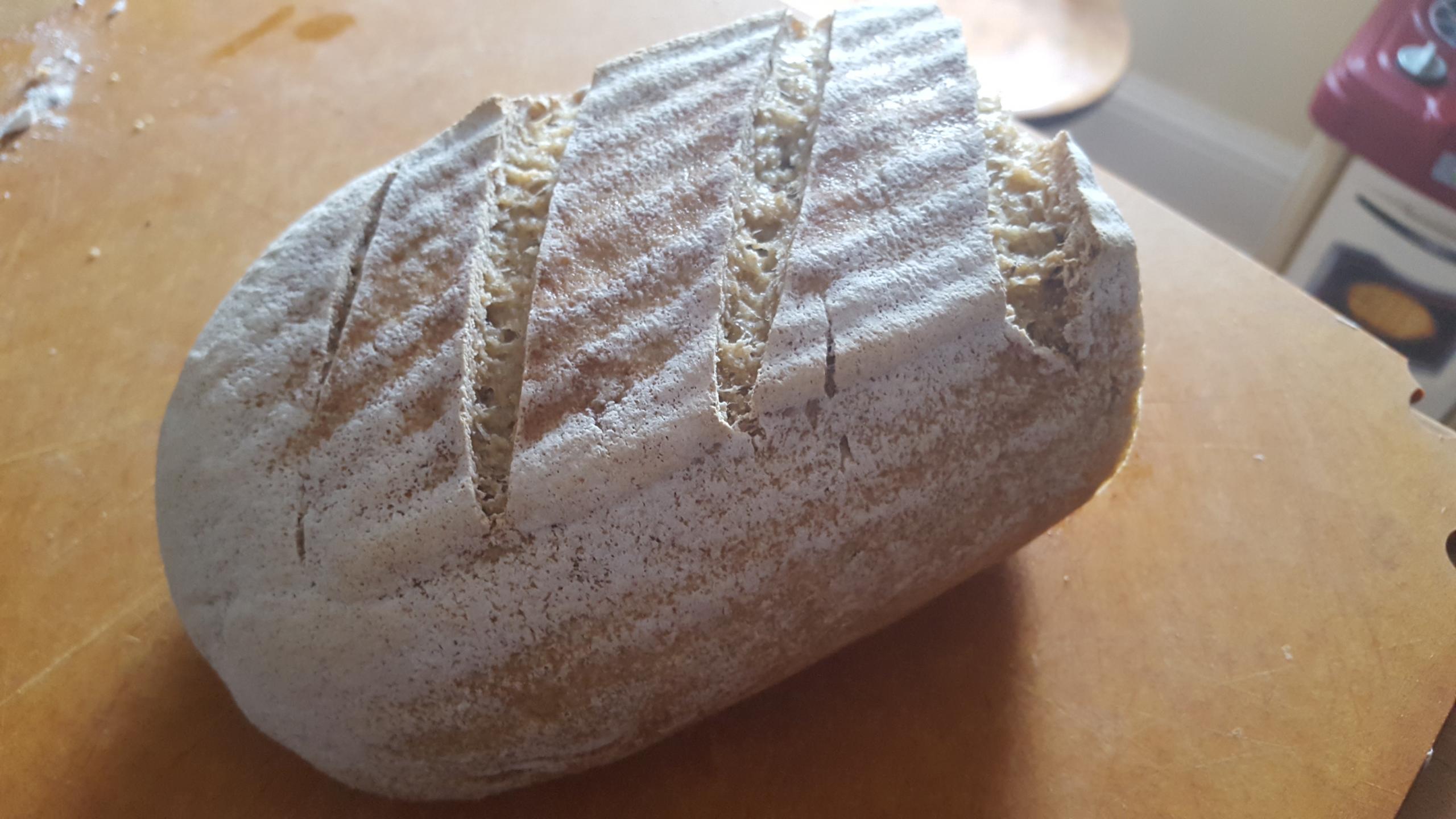Hi Everyone,
I have been baking gluten free sourdough for a few years, and from time to time the bread (different recipes) comes out with a hard, dry crust on the top:

The bottom of the loaf is unaffected. It only seems to happen where the crust is directly exposed to the hot oven air. Usually, baking with a cast iron dutch oven and leaving the lid on for the first 20 minutes, the crust remains nicely brown. This loaf came out of a new clay baker (from breadtopia), and even with the lid on for the first 20 minutes, this dry white crust appeared.
Does anyone know what makes this dry white crust appear? Sugar content? Hydration? Too much flour in the banneton? Something else?
I can list the recipe if needed, but first thought I would ask if there was a simple (haha) answer to the problem.
Thanks for any help!
(I posted this in this area, rather than the gluten free, because I thought this may be more of a universal issue, rather than specific to gluten free baking)
... combined with your comments, I wonder if the outer layer of the crust is becoming dehydrated when exposed to a blast of hot dry air.
Is the clay baker glazed, or unglazed? Unglazed clay "breathes" - maybe not a huge amount, but definitely more than iron. ? (That is to say, your iron pot probably traps more steam, keeping the bread's surface from drying out.)
I think that leaves you with (a) continue to bake inside some kind of container or covering that traps steam close to the loaf, or (b) change the dough recipe to try to prevent this, or (c) brush your unbaked bread with oil or other surface treatment before it goes into the oven.
My first thought is to just stick with what was already working before, unless there was something else wrong with it.
Thanks, David.
The clay baker is unglazed. I had that thought, that the baker itself was doing something different than my cast iron.
I wanted to use the clay baker because I wanted a new shape for the loaf, as well as exploring the possibility of offering a small bread-share to gluten free folks in my area - the clay baker seemed like a good way to still get a covered bake and fit several into my oven at the same time.
I do spritz the loaf with water before it goes in, but I have not tried oil. It is interesting, looking at the picture, that the exposed bread from the slashes is not dry and white - only the crust around it. Also not dry and white are the 'valleys' of the ridges formed by the banneton.
I think that all this makes me want to change the recipe, to hopefully solve all the issues at once (and still let me use the clay baker :-).
I am not sure where to start with this one. Here is the recipe:
100g oat flour
115g. buckwheat flour
130g. millet flour
155g. tapioca starch
(500g total)
10g. salt
12g. sugar
17g psyllium husk powder
440g water
Usually I mix 20g. of starter (brown rice) with 250g. of the flour mixture and 250g of water. I let that ferment overnight, then mix in the rest of the ingredients in the morning. It usually takes 2-4 hours to rise a bit, then into the oven at 450f, covered in a dutch oven (or clay baker in this case) for 20 mins, then lid off for another 20-30 until the internal temp is 200f.
The hydration is already at 88%...I think it could be higher using psyllium husk, I have seen gf breads with psyllium husk at 100% hydration or higher.
Not sure if hydration is the place to start, but welcome any thoughts!
Glazed instead of unglazed? Much smaller iron pots?
Well, I made the same loaf with 100% hydration and brushed half with oil. The half with oil had no white dryness, the half without had only a little bit. So it seems a combination of both will be the solution!
The rye/spelt crust came out white/gray and several things were happening.
Placed loaf snuggly inside a plastic bag for the wee hours and this morning, the crust colour returned to "normal" the expected colour to match the sides and bottom of the loaf. Moisture had moved from the inside of the loaf to the crust and fixed it up nicely with a soft crust and brown crust colour. Happy camper here.